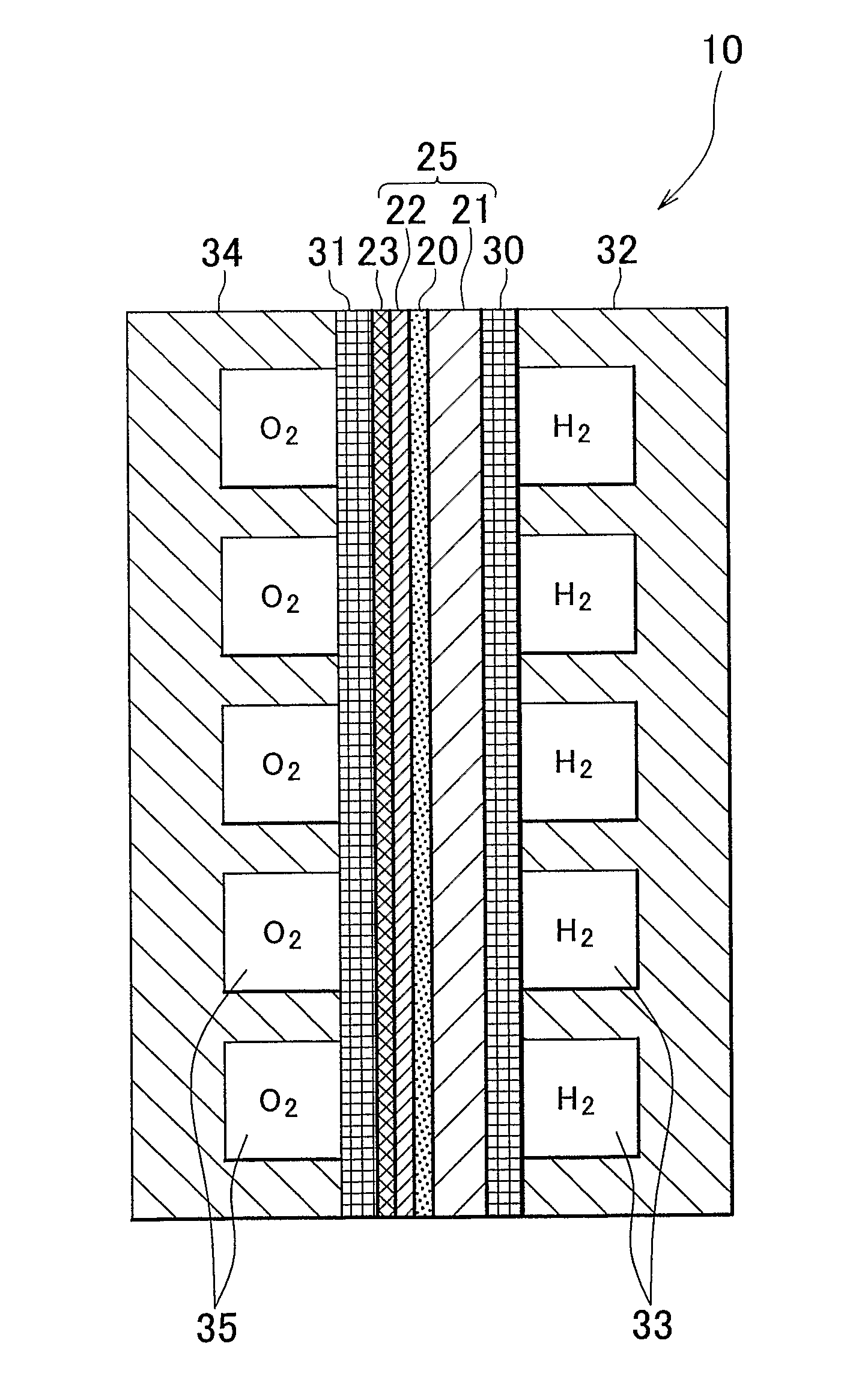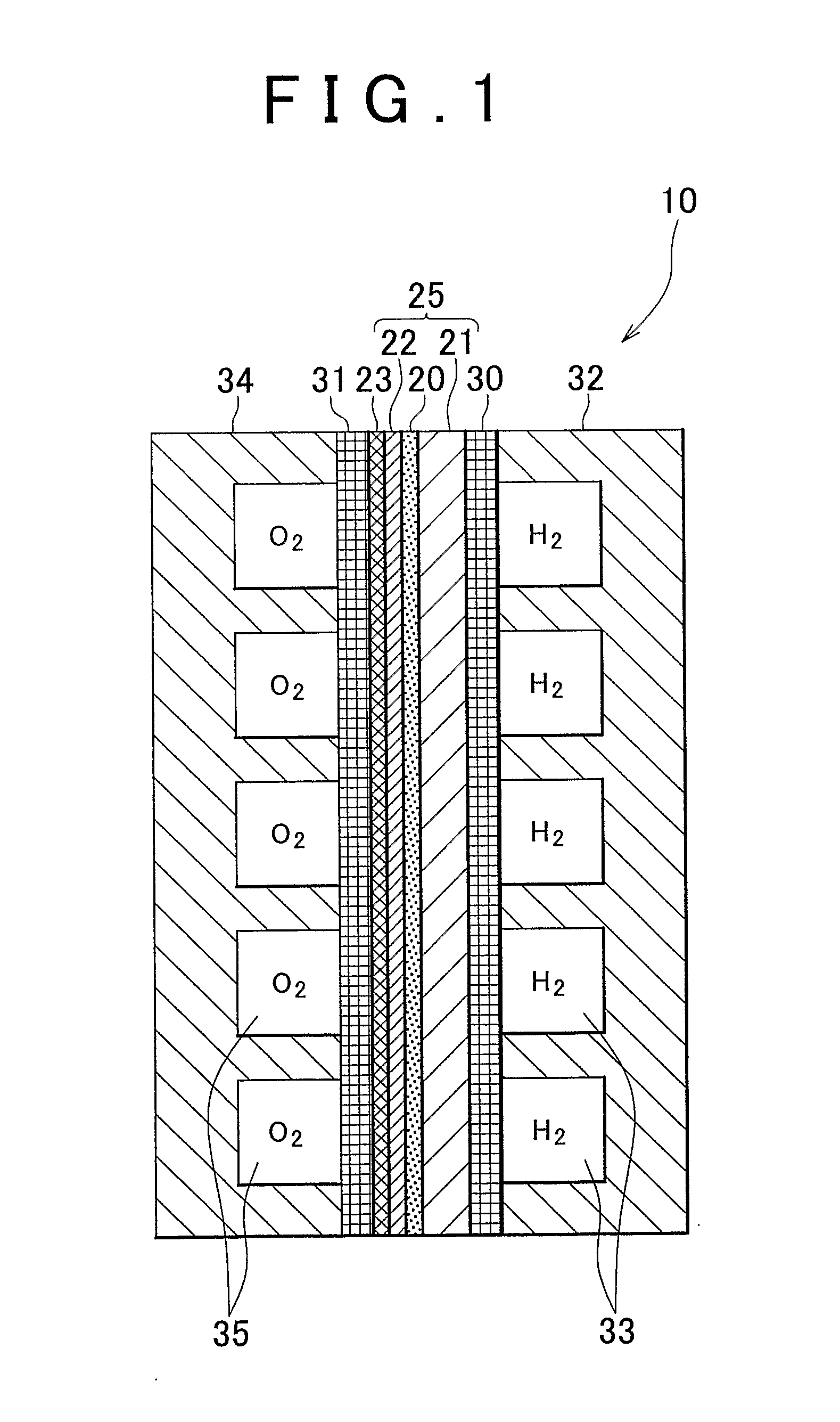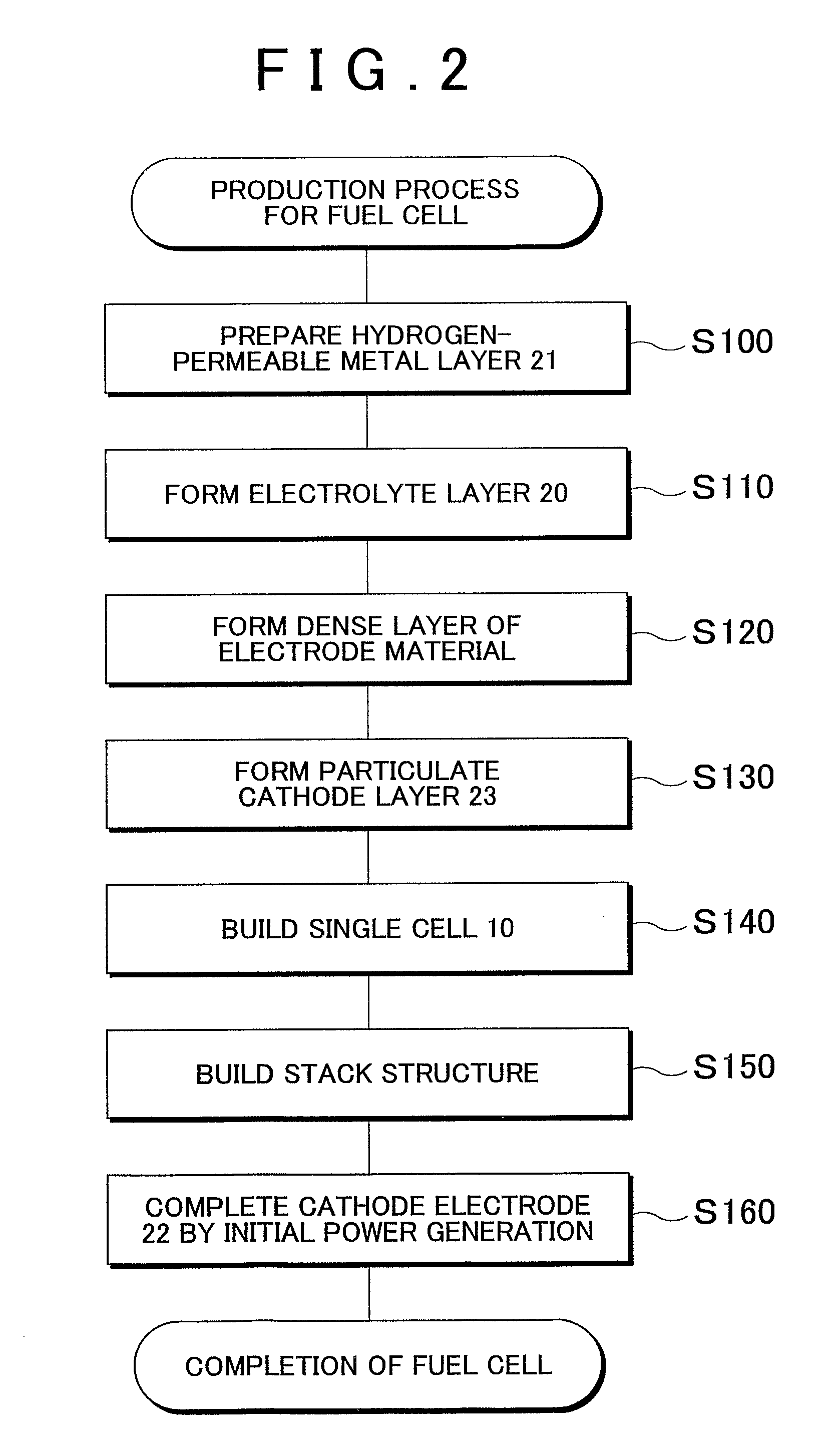Fuel Cell Production Method And Fuel Cell
a fuel cell and production method technology, applied in the manufacture of cell components, final product products, electrochemical generators, etc., can solve the problems of complicated production process, achieve sufficient porosity, convenient and convenient electrode production, and achieve sufficient current collection characteristics
- Summary
- Abstract
- Description
- Claims
- Application Information
AI Technical Summary
Benefits of technology
Problems solved by technology
Method used
Image
Examples
examples
[0079] Fuel cells of the first and second samples of the invention, and a fuel cell of a first comparative example were produced, and their cathode electrodes were compared in appearance.
[0080] (A) Production of Fuel Cell:
[0081] (A-1) First Sample:
[0082] The fuel cell of the first sample has a construction similar to that shown in FIG. 1. In the fuel cell of the first sample, a Pd substrate of 80 μm in thickness was used as a hydrogen-permeable metal layer 21. Furthermore, the electrolyte layer 20 was fabricated by forming a layer of BaCe0.8Y0.2O3 of 2 μm in thickness as a film on the hydrogen-permeable metal layer 21 through the PLD method. The dense layer 22a for forming the cathode electrode 22 was fabricated by forming a layer of La0.6Sr0.4CoO3 of 25 nm in thickness as a film on the electrolyte layer 20 through the PLD method. The particulate cathode layer 23 was formed by screen printing through the use of a paste containing fine particles of 0.9 μm in average particle diame...
PUM
| Property | Measurement | Unit |
|---|---|---|
| Thickness | aaaaa | aaaaa |
| Thickness | aaaaa | aaaaa |
| Thickness | aaaaa | aaaaa |
Abstract
Description
Claims
Application Information
 Login to View More
Login to View More - R&D
- Intellectual Property
- Life Sciences
- Materials
- Tech Scout
- Unparalleled Data Quality
- Higher Quality Content
- 60% Fewer Hallucinations
Browse by: Latest US Patents, China's latest patents, Technical Efficacy Thesaurus, Application Domain, Technology Topic, Popular Technical Reports.
© 2025 PatSnap. All rights reserved.Legal|Privacy policy|Modern Slavery Act Transparency Statement|Sitemap|About US| Contact US: help@patsnap.com



